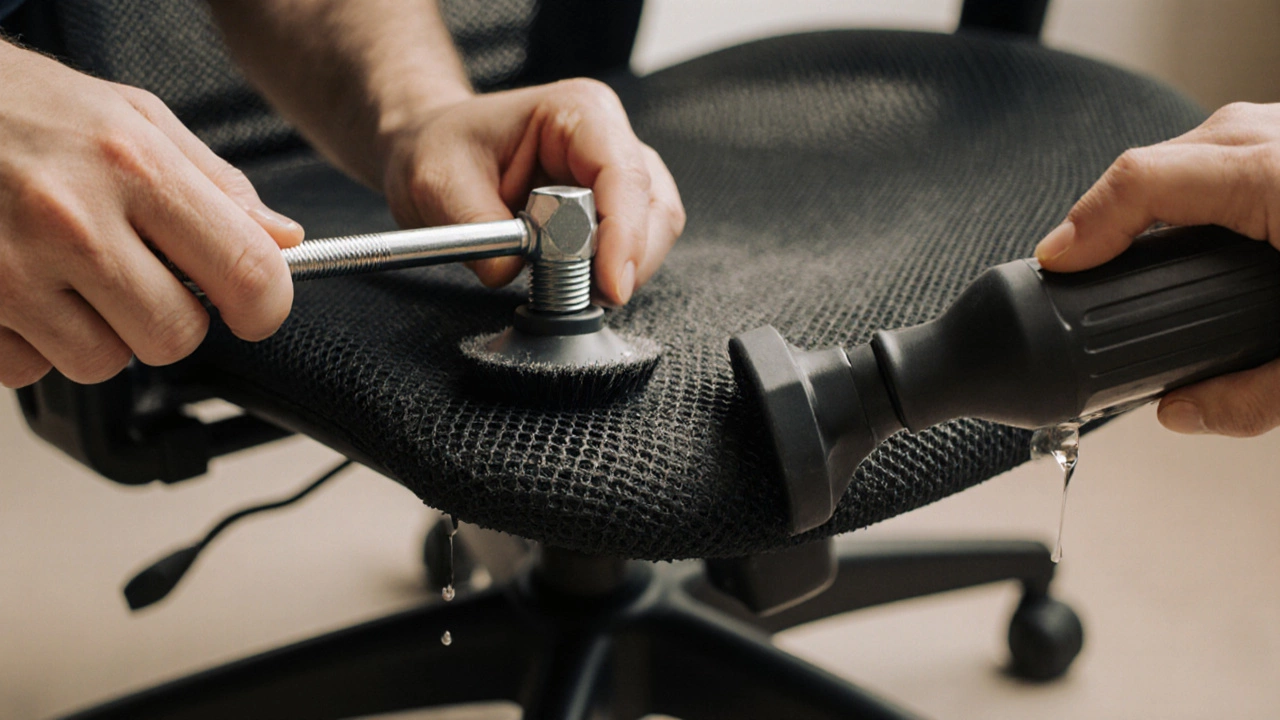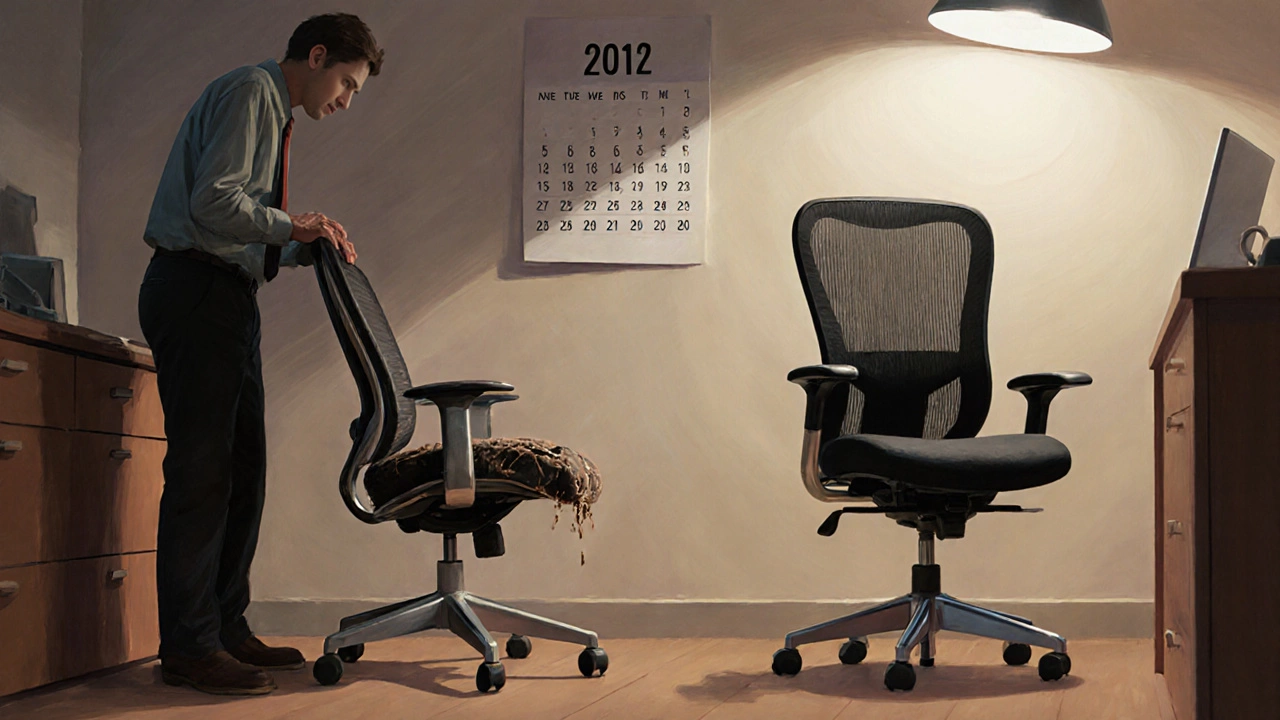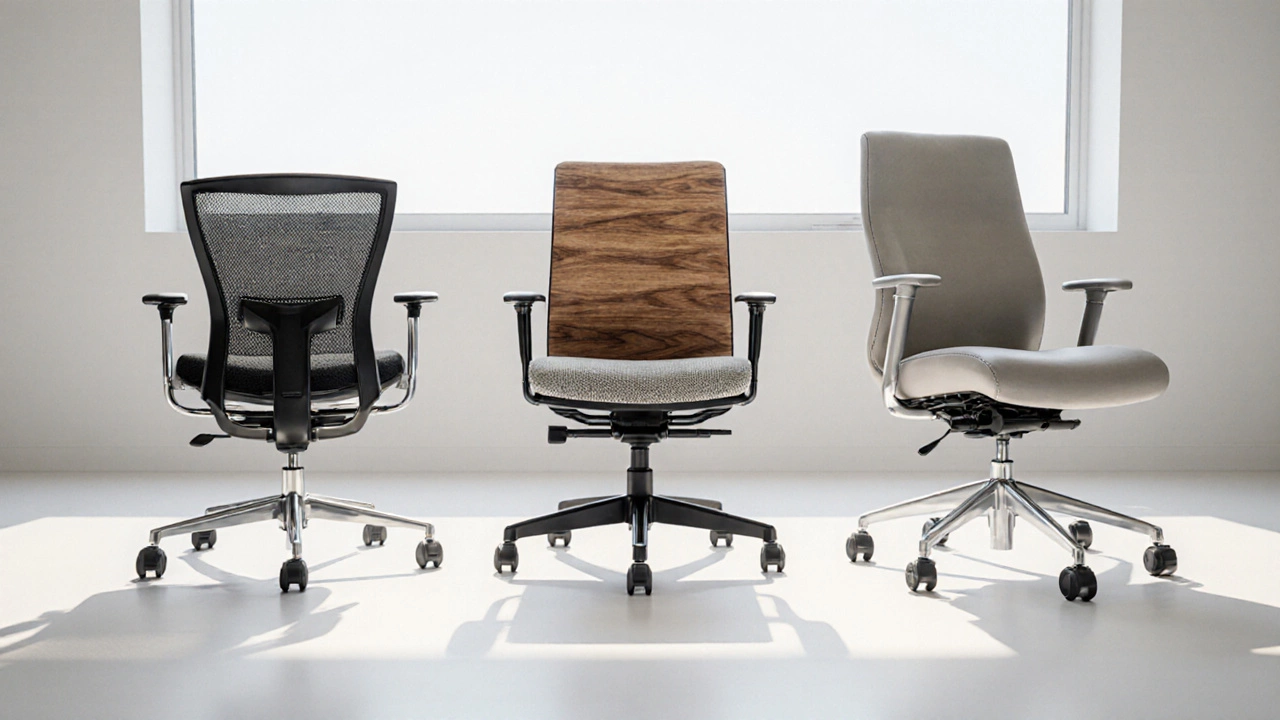Office Chair Lifespan Calculator
Estimated Lifespan
| Material | Average Lifespan | Key Pros | Common Weaknesses |
|---|---|---|---|
| Steel or Aluminum Frame with Mesh Upholstery | 8–10 years | Strong, breathable, adaptable to weight | Can dent if heavy objects dropped |
| Plastic Frame with Faux Leather | 3–5 years | Lightweight, low cost | Cracks under repeated stress, tears |
| Wood Frame with Fabric | 6–8 years | Stylish, solid feel | Susceptible to humidity warping |
| Hybrid (Metal Base, Leather Seat) | 7–9 years | Premium look, sturdy | Leather can crack without conditioning |
When choosing an office chair is a a piece of furniture designed for prolonged sitting at a desk, typically featuring adjustable components to support posture, the big question is how many years you can expect it to serve you well. In this guide we break down the real‑world factors that dictate a chair’s lifespan, share maintenance tricks that add years, and help you decide when it’s time to replace instead of repair.
Key Takeaways
- A quality office chair typically lasts 5-10 years with regular use.
- Materials matter: mesh frames often exceed 8 years, leather around 6, and low‑grade plastic under 4.
- Proper ergonomics, load capacity, and routine maintenance can add up to 30% more life.
- Check warranties: a 5‑year warranty usually signals a longer‑lasting product.
- Replace the chair when adjustments no longer keep you comfortable or when structural parts fail.
Below we’ll walk through the numbers, the why, and the how.
What’s the Average office chair lifespan?
Industry surveys from major office‑furniture manufacturers in 2024 show that the median service life of a mid‑range ergonomic chair is about 7.5 years. High‑end models from brands that use premium components push the average to 9-10 years, while budget‑track chairs often fall short of the 4‑year mark.
These figures assume a typical office schedule: 8 hours a day, 5 days a week, with occasional weekend use. If you’re a remote worker who logs 10‑12 hours a day, expect the lifespan to shrink by roughly 15-20%.
Factors That Stretch or Shrink a Chair’s Life
Several variables directly influence how long a chair stays functional:
- Materials the raw substances used for the frame, seat, and upholstery - metal frames resist fatigue better than plastic; breathable mesh fabric a woven synthetic material that provides ventilation outlast low‑grade vinyl.
- Ergonomics the design of adjustable features that match a user’s body - a chair that can be easily adjusted reduces wear on hinges and gas lifts.
- Load capacity the maximum weight a chair is engineered to support safely - exceeding this rating accelerates frame cracking and seat deformation.
- Frequency of use - more hours mean more cycles for moving parts.
- Environment - exposure to sunlight, humidity, or extreme temperatures can degrade upholstery and metal finishes.
- Maintenance regular cleaning, tightening, and part replacement - neglect leads to squeaks, loose bolts, and ultimately failure.

How Materials Shape Longevity
| Material | Average Lifespan | Key Pros | Common Weaknesses |
|---|---|---|---|
| Steel or Aluminum Frame with Mesh Upholstery | 8-10 years | Strong, breathable, adaptable to weight | Can dent if heavy objects dropped |
| Plastic Frame with Faux Leather | 3-5 years | Lightweight, low cost | Cracks under repeated stress, tears |
| Wood Frame with Fabric | 6-8 years | Stylish, solid feel | Susceptible to humidity warping |
| Hybrid (Metal Base, Leather Seat) | 7-9 years | Premium look, sturdy | Leather can crack without conditioning |
Notice that the frame material often outweighs the upholstery in determining durability. A sturdy metal base paired with a breathable mesh can outlive a pricey leather seat on a flimsy plastic frame.
Warranty as a Lifespan Indicator
A manufacturer’s warranty tells you how long they expect the chair to hold up under normal use. Here’s a quick rule‑of‑thumb:
- 2‑year warranty - budget models; expect 3‑4 years of service.
- 5‑year warranty - mid‑range ergonomic chairs; aligns with the 5‑7 year average.
- 7‑10‑year warranty - premium brands; they’re betting on a decade of use.
When a brand offers a longer warranty, check the fine print. Does it cover the gas lift, arm‑rest mechanisms, and fabric, or only the frame? A comprehensive warranty that covers moving parts is a strong signal of build quality.
Maintenance Tips to Add Years to Your Chair
Simple habits can stretch a chair’s life well beyond the baseline:
- Keep bolts tight. Use a small Allen key to check the base, arm‑rests, and lumbar support every 3-4 months.
- Clean upholstery regularly. For mesh, a vacuum with a brush attachment removes dust that can wear the fibers. For leather, a damp cloth followed by a leather conditioner prevents cracking.
- Lubricate moving parts. A few drops of silicone oil on the tilt mechanism and gas lift keep squeaks at bay.
- Rotate the seat cushion if it’s removable. This distributes wear evenly.
- Protect the chair from direct sunlight. UV rays degrade most fabrics within a couple of years.
Most manufacturers recommend replacing worn-out gas lifts (costing about £30-£50) before the whole chair fails. It’s a cheap way to add another two to three years.
When to Replace vs. Repair
Even with diligent care, chairs eventually hit a point where repair costs outweigh benefits. Consider replacing when:
- The frame cracks or bends.
- Adjustments no longer hold - e.g., the height knob slides down constantly.
- Seat foam has permanently collapsed, causing sagging.
- Ergonomic support is compromised, leading to back pain.
On the other hand, swapping a broken wheel, tightening a loose arm‑rest, or replacing a gas cylinder can be economical if the rest of the chair is still solid.

Cost vs. Longevity: Calculating Return on Investment (ROI)
Think of a chair as a work tool. If you spend £250 on a chair that lasts 8 years, the annual cost is just under £32. Compare that to a £80 budget chair lasting 3 years - about £27 per year. The premium model isn’t dramatically more expensive per year, but it offers better ergonomics and fewer sick days, which can translate into hidden savings.
A quick ROI formula many office managers use is:
(Purchase Price) ÷ (Expected Lifespan in Years) = Annual Cost
Then factor in depreciation the reduction in value over time due to wear and market changes and potential health‑related costs. A chair that reduces back‑pain incidents can save the business far more than its marginal annual cost.
Choosing a Chair Built to Last
When you’re ready to buy, focus on these criteria:
- Frame material: metal > wood > plastic.
- Upholstery: mesh or high‑grade fabric > faux leather > low‑grade vinyl.
- Adjustability: at least height, tilt, and lumbar support.
- Warranty length and coverage details.
- Weight capacity matching your body weight plus a safety margin (typically 20-30kg extra).
Brands that consistently rank high in durability tests (e.g., Herman Miller, Steelcase, and Haworth) often exceed the 9‑year mark under heavy office use.
Bottom Line
A good office chair should comfortably serve you for 5‑10 years, depending on material quality, how you use it, and how well you look after it. By picking a model with a solid warranty, choosing durable materials, and performing simple maintenance, you can maximize that window and keep your back happy.
Frequently Asked Questions
How many hours a day can I sit on an office chair before it starts to wear out?
Most ergonomic chairs are engineered for 8‑10 hours of daily use. After about 5‑7 years of that schedule, components like the gas lift and upholstery may begin to show noticeable wear.
Is a longer warranty always a sign of a longer‑lasting chair?
Generally, yes. Manufacturers tend to back products they expect to endure. However, read the warranty details - a warranty covering only the frame isn’t as reassuring as one that also includes the mechanisms and upholstery.
Can I replace the gas lift on my chair to extend its life?
Yes, most modern chairs use a standard gas‑cylinder that can be swapped for about £30‑£50. Replacing it is often cheaper than buying a new chair and can add 2‑3 more years.
What’s the best material for a chair that lasts the longest?
A metal frame with breathable mesh upholstery generally offers the best combination of durability and comfort, often reaching 8‑10 years under typical office use.
How often should I tighten the bolts on my office chair?
Check them every 3-4 months, or sooner if you notice any wobbling or squeaking during adjustments.


Write a comment